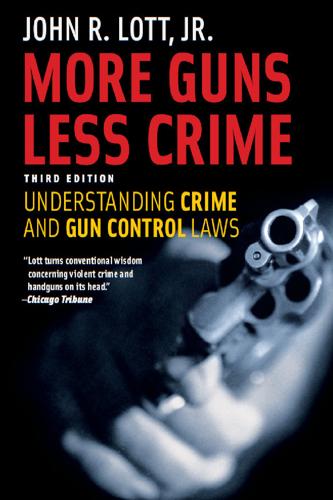
More Guns, Less Crime: Understanding Crime and Gun-Control Laws
by
John R. Lott
Published 15 May 2010
More Guns, Less Crime MORE GUNS, LESS CRIME UNDERSTANDING CRIME AND GUN-CONTROL LAWS THIRD EDITION JOHN R. LOTT, JR. THE UNIVERSITY OF CHICAGO PRESS CHICAGO AND LONDON John R. Lott, Jr., is the author of five books, including Freedomnomics and Are Predatory Commitments Credible? Who Should the Courts Believe? The University of Chicago Press, Chicago 60637 The University of Chicago Press, Ltd., London © 1998, 2000, 2010 by The University of Chicago All rights reserved. Published 2010 Printed in the United States of America 19 18 17 16 15 14 13 12 11 10 1 2 3 4 5 ISBN-13: 978-0-226- 49366-4 (paper) ISBN-10: 0-226-49366-0 (paper) Library of Congress Cataloging-in-Publication Data Lott, John R.
…
Douglas Weil: But the most important information is that the Voter News Service, which conducted the 1996 poll has said the poll cannot be used in the manner Dr. Lott used it. It cannot be used to say anything about gun ownership in any state, and it cannot be used to compare gun ownership to the earlier 1988 voter poll. (“More Guns, Less Crime? A Debate between John Lott, Author of More Guns, Less Crime, and Douglas Weil, Research Director of Handgun Control, Inc.,” an on-line debate sponsored by Time magazine, transcript from July 1, 1998) Statistics from the CBS and Voter News Service exit polls (discussed in chapters 3 and 5) were originally “weighted” by these organizations to reflect the share of different racial, sex, and age groups in the national population.
…
Indeed, changing tests to employ a greater percentage of blacks appears to make it more difficult to screen out lower-quality candidates generally, including whites and other racial groups” (John R. Lott, Jr., “Who Is Really Hurt by Affirmative Action?” Subject to Debate, May 1998, pp. 1, 3). 52. William F. Shughart II, “More Guns, Less Crime: Understanding Crime and Gun Control Laws: Review,” Southern Economic Journal 65, no. 4 (Apr. 1, 1999): 978. 53. Bruce L. Benson, “Review of More Guns, Less Crime,” Public Choice 100 (Sept. 1999), nos. 3–4: 309. 54. Stan Liebowitz, “Handgun Argument Is Loaded,” Dallas Morning News, June 21, 1998. 55. Nelson Lund, “Gunning Down Crime: The Statistics of Concealed Weapons,” Weekly Standard, June 1, 1998. 56.
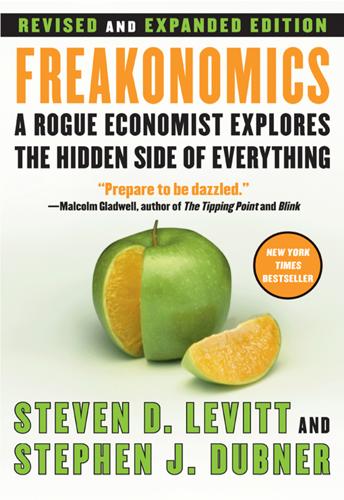
Freakonomics: A Rogue Economist Explores the Hidden Side of Everything
by
Steven D. Levitt
and
Stephen J. Dubner
Published 11 Apr 2005
Lott Jr. and David Mustard, “Right-to-Carry Concealed Guns and the Importance of Deterrence,” Journal of Legal Studies 26 (January 1997), pp. 1–68; and John R. Lott Jr., More Guns, Less Crime: Understanding Crime and Gun Control Laws (Chicago: University of Chicago Press, 1998). / 121 John Lott as Mary Rosh: See Julian Sanchez, “The Mystery of Mary Rosh,” Reason, May 2003; and Richard Morin, “Scholar Invents Fan to Answer His Critics,” Washington Post, February 1, 2003. / 121–22 Lott’s gun theory disproved: See Ian Ayres and John J. Donohue III, “Shooting Down the ‘More Guns, Less Crime’ Hypothesis,” Stanford Law Review 55 (2003), pp. 1193–1312; and Mark Duggan, “More Guns, More Crime,” Journal of Political Economy 109, no. 5 (2001), pp. 1086–1114.
…
Not enough, that is, to make even a sliver of impact on the fall of crime. Then there is an opposite argument—that we need more guns on the street, but in the hands of the right people (like the high-school girl above, instead of her mugger). The economist John R. Lott Jr. is the main champion of this idea. His calling card is the book More Guns, Less Crime, in which he argues that violent crime has decreased in areas where law-abiding citizens are allowed to carry concealed weapons. His theory might be surprising, but it is sensible. If a criminal thinks his potential victim may be armed, he may be deterred from committing the crime. Handgun opponents call Lott a pro-gun ideologue, and Lott let himself become a lightning rod for gun controversy.
…
“You wouldn’t know that he was a ‘right-wing’ ideologue from the class….There were a group of us students who would try to take any class that he taught. Lott finally had to tell us that it was best for us to try and take classes from other professors more to be exposed to other ways of teaching graduate material.” Then there was the troubling allegation that Lott actually invented some of the survey data that support his more-guns/less-crime theory. Regardless of whether the data were faked, Lott’s admittedly intriguing hypothesis doesn’t seem to be true. When other scholars have tried to replicate his results, they found that right-to-carry laws simply don’t bring down crime. Consider the next crime-drop explanation: the bursting of the crack bubble.
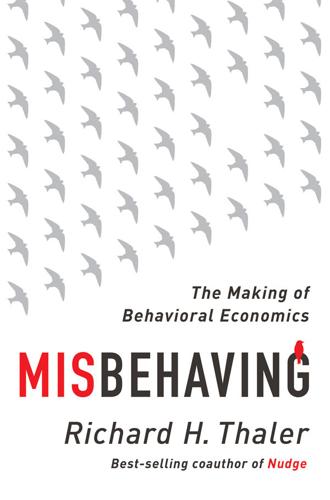
Misbehaving: The Making of Behavioral Economics
by
Richard H. Thaler
Published 10 May 2015
One of the unfortunate aspects of the University of Chicago at that time, one that is thankfully no longer the case, was that there was an undue tolerance for scholars who would spout the Chicago School traditional lines, loudly and frequently. One example was the economist John Lott, who had strung together a series of visiting appointments allowing him to be at the university for several years. Lott is most famous for writing a book entitled More Guns, Less Crime. As the title suggests, the thesis of the book is that if we just made sure every American was armed at all times, no one would dare commit a crime, a claim that other researchers have strongly disputed.§ Lott was a frequent attendee and active participant at workshops. His style resembled that of a pit bull.
…
Chapter 26: Fruit Flies, Icebergs, and Negative Stock Prices 249 LTCM had collapsed: Lowenstein (2000). 249 in a paper they published on this topic: Shleifer and Vishny (1997). 250 an academic paper about the . . . episode: Lamont and Thaler (2003). 251 “we might define an efficient market”: Black (1986), p. 553. 252 “liar loans”: See Mian and Sufi (2014). Chapter 27: Law Schooling 258 The published version of the paper: Jolls, Sunstein, and Thaler (1998). 259 “Posner evidently writes”: Solow (2009). 262 “The Problem of Social Cost”: Coase (1960). 262 “This is, of course, a very unrealistic assumption”: Ibid., p. 15. 265 More Guns, Less Crime: Lott (1998). 268 In not a single case did the parties even attempt to negotiate: Farnsworth (1999). 269 Oxford Handbook of Behavioral Economics and the Law: Zamir and Teichman (2014). 269 “The battle . . . has been won”: Korobkin (2011). Chapter 28: The Offices 275 If there is a number, people will use it: Hsee et al. (2009).
…
“Anomalies in Intertemporal Choice: Evidence and an Interpretation.” Quarterly Journal of Economics 107, no. 2: 573–597. Lohr, Steve. 1992. “Lessons From a Hurricane: It Pays Not to Gouge.” New York Times, September 22. Available at: http://www.nytimes.com/1992/09/22/business/lessons-from-a-hurricane-it-pays-not-to-gouge.html. Lott, John R. 1998. More Guns, Less Crime: Understanding Crime and Gun Control Laws. Chicago: University of Chicago Press. Lowenstein, Roger. 2000. When Genius Failed: The Rise and Fall of Long-Term Capital Management. New York: Random House. ———. 2001. “Exuberance Is Rational.” New York Times Magazine, February 11. Available at: http://partners.nytimes.com/library/magazine/home/20010211 mag-econ.html.

Giving the Devil His Due: Reflections of a Scientific Humanist
by
Michael Shermer
Published 8 Apr 2020
Following the ten-year Federal Assault Weapons Ban enacted in the United States in 1994, the National Research Council (NRC) reviewed all academic studies of the assault weapon ban, concluding that the data “did not reveal any clear impacts on gun violence,” and noted, “due to the fact that the relative rarity with which the banned guns were used in crime before the ban … the maximum potential effect of the ban on gun violence outcomes would be very small.”36 On the pro-gun side of the debate, John Lott, whom I spent a weekend with in Santa Fe, New Mexico, at a conference and whose book More Guns, Less Crime has been a steady flash point for controversy, argues that gun bans have the opposite effect than intended.37 Take Washington, DC, he says. Before the ban on handguns was implemented in August of 1976, DC ranked twentieth in murder rates out of the top fifty cities in America. After the gun ban, DC shot up to either #1 or #2, where year after year it held steady as “the murder capital of the nation,” as it was dubbed by the media.
…
Either way, Lott is remarkably adroit with numbers, demographics, studies, and statistics related to guns, and he can rattle them off from memory in a debate or on a television show. I did my homework on Lott’s research and his critics, and prepared slides summarizing studies that are (1) critical of Lott’s methods and results, and (2) show the exact opposite of what he concluded in his title-by-thesis book: More Guns, Less Crime. As often as not, more guns is associated with more crime, particularly homicide. As a quick-and-dirty guide to the gun-control debate, here are a few of the key take-home points from my PowerPoint presentation, starting with NRA Executive Vice President Wayne LaPierre’s famous proclamation: The only thing that stops a bad guy with a gun is a good guy with a gun.
…
Mather, Kate. 2013. “Out in Force.” Los Angeles Times, January 7, A1. 35. “After Newtown.” 36. Wellford, Charles F., John V. Pepper, and Carol V. Petrie (Eds.). 2005. Firearms and Violence: A Critical Review. National Research Council, National Academy of Science, NAP. 37. Lott, John. 2010. More Guns, Less Crime: Understanding Crime and Gun Control Laws (3rd Edition). University of Chicago Press. 38. Feldman, Josh. 2012. “Piers Morgan and Alan Dershowitz Get in Heated Argument with Anti-Gun Control Advocate.” MEDIAite, July 23. https://bit.ly/2EgtiH4 39. Duncan, Otis Dudley. 2000. “Gun Use Surveys: In Numbers We Trust?”
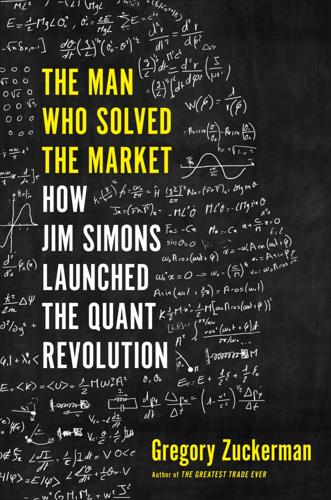
The Man Who Solved the Market: How Jim Simons Launched the Quant Revolution
by
Gregory Zuckerman
Published 5 Nov 2019
Back at the office, Mercer began to show a new side to his personality. When staffers lunched together, they mostly steered clear of controversial topics. Not Mercer. He hardly spoke during many work meetings, but Mercer turned oddly loquacious over these meals. Some of his comments—such as his support for the gold standard and affection for More Guns, Less Crime, the John R. Lott Jr. book arguing that crime falls when gun ownership rises—reflected conservative beliefs. Others were more iconoclastic. “Gas prices are up . . . we really should fix that,” Mercer said one day. Mercer enjoyed goading his colleagues, many of whom were liberal or libertarian, surprising them with views that were becoming increasingly radical.
…
(Kelly formula), 91–92, 96, 127 Kempe, Julia, 272 Kennedy, John F., 31, 78 Kepler Financial Management, 133–34, 157, 166–67 kernel methods, 84–86, 96 Kirtland Air Force Base, 170–71 Klein, Naomi, 321 Koch, Charles, 278 Koch, David, 278 Kochen, Simon, 69–70, 71, 103 Kononenko, Alexey, 236–37, 241–43, 262–63, 270–71 Kostant, Bertram, 18, 20 Kovner, Bruce, 140 Kurz, Christopher, 121–22 Kushner, Jared, 281, 292 Lackman, Abe, 286 Laufer, Henry, xi, 101 background of, 140–41 Long Island Sound estate of, 227–28 at Renaissance, 109, 141–44, 149–50, 201, 229–31, 233 at Stony Brook, 77, 78, 84–85, 141–42 trading models, 77, 107–18, 142–43, 149–50, 156, 168, 189, 197, 229–30, 253, 258 Laufer, Marsha Zlatin, 141–42 Law of Vibration, 123 Lawrence School, 13 Leave.EU, 280–81 L’eggs, 162 Lehman Brothers, 173, 264, 309 Leibler, Dick, 26, 30–31, 32 Leinweber, David, 204 Leo, Leonard, 290 Let’s Make a Deal (TV show), 211 leverage, 188 Lewinsky, Monica, 208 Lieberman, Louis, 46 Limroy, 50–51, 53, 54, 55, 58, 98, 346 linear regression, 83–84 liquidity, 229 Lo, Andrew, 123, 124 locals, 110 Loma Prieta earthquake of 1989, 107 Long-Term Capital Management (LTCM), 209–11, 212–13, 226, 256 Lord Jim, The (yacht), 60 loss aversion, 152 Lott, John R., Jr., 207 Lourie, Robert, 11, 228, 257 Lux, Hal, 218 Lynch, Carolyn, 162 Lynch, Peter, xvi, 3, 161–63 McCain, John, 304 McCarthy, David, 154 McCarthy, Eugene, 74 McGrayne, Sharon, 202 machine learning, 4–5, 47–48, 144, 205, 215, 315 McNulty, Bill, 295 Macrae, Kenny, 267 macro investors, 164 “macroscopic variables,” 29 Madoff, Bernard, 146n, 198 Magellan Fund, 161–63, 333 Magerman, David, xi background of, 182–84 computer hacking of, 191–93, 213 confrontational behavior of, 235, 270 education of, 183–85 at IBM, 177, 181, 185, 191–92 Mercers and, 195, 213–14, 232, 277, 291–99, 318 at Penn, 270 philanthropic activity of, 270, 318 presidential election of 2016 and Trump, 290–94 Magerman, David, at Renaissance Brown and, 181–82, 191–95, 241, 294, 296, 297, 299, 318 computer bug, 194–95, 213 departures, 262–63, 269–70 firing, 317–18 Kononenko and, 237, 241–43, 262–63, 270–71 lawsuit and financial settlement, 318–19 misgivings of, 269–70 recruitment of, 181–82, 186–87 return to, 270–71 Simons and, 181–82, 186–87, 234–35, 237, 296–99 tech bubble, 215–17 trading system, 186–87, 191–95, 213–17, 234–36 Magerman, Debra, 291, 292 Magerman, Melvin, 182–83, 184 Mahlmann, Karsten, 114 Malloy, Martin, 259 management fees, 115n, 248 Man AHL, 313 Mandelbrot, Benoit, 127 Man for All Markets, A (Thorp), 128 Manhattan Fund, 123 market neutral, 166–67, 211, 255 Markov chains, 46–48, 81 Markov model, xx, 29, 174 Markowitz, Harry, 30 Massachusetts Institute of Technology (MIT), 9, 14–16, 17, 20–21, 89–91, 325–26 Mathematical Sciences Research Institute, 236–37 Math for America, 269, 296–99, 321 Matrix, The (movie), 307 Mattone, Vinny, 210–11 Mayer, Jane, 280 Mayer, Jimmy, 15, 16–17, 21, 38–39, 50 Mazur, Barry, 15 Medallion Fund basket options, 225–27 fees, 145–46, 235–36, 271, 315–16 financial crisis and, 257–61, 263–64 GAM Investments, 153–54 launch of, 98 move into stock investing, 157–58 returns, xvi, 140, 145–46, 151, 153, 156, 157, 215, 217–18, 223–24, 225, 247–48, 255, 271, 315–16, 319, 331–32 returns comparison, 333 Sharpe ratio, 218, 223–24, 245 size limit, 246–47 trading models, 107–9, 113, 138–40, 142–43, 156–57, 168, 197–205, 271–74 Media Research Center, 304 Mercer, Diana, 179, 186, 214, 228, 288 Mercer, Heather Sue, 207, 214, 228 Mercer, Jennifer “Jenji,” 179, 186, 228 Mercer, Rebekah, xi, 228 Bannon and Breitbart News, 278–83, 288–90, 294–95, 301–2 emergence as right-wing donor, 277–79, 301–2 Magerman and, 214, 291, 293, 298, 299 political blowback and, 301–2, 303–5 presidential election of 2016 and Trump, xviii, 279–86, 288–90, 294–95 at Renaissance, 214 Mercer, Robert, xi background of, 169–70 education of, 169–70 emergence as right-wing donor, xviii, 276–86, 325–26 at IBM, 4–5, 169, 171–81, 187–88, 202 interest in computers, 170–71 at Kirtland Air Force Base, 170–71 libertarian views of, 171, 207–8, 232, 235, 275–77 presidential election of 2016 and Trump, xviii, 279–87, 291–95, 299–300, 302 Stony Brook Harbor estate (Owl’s Nest), 228, 275, 288–89, 295 Mercer, Robert, at Renaissance client presentations, 251 as co-CEO, xviiin, 231, 290, 301 equity stake, 201 financial crisis and, 257–61 Magerman and, 195, 213–14, 232, 277, 291–99, 318 management, 230–31, 232–33, 237, 241–43, 254–55, 289–90 political blowback and, 291–305 recruitment of, 169, 179–80 resignation of, 301–2, 319 statistical-arbitrage trading system, 4–5, 187–91, 193–95, 197–99, 205–8, 213–14, 221–22, 223, 229–32, 255, 272 tech bubble, 215–17 Mercer, Thomas, 169, 179 Mercer, Virginia, 169 Mercer Family Foundation, 276 Meriwether, John, 209–11, 212 Merrill Lynch, 19–20, 54, 96 Merton, Robert C., 209 Mexico–United States border wall, 290–91 Microsoft, 38, 59 Milken, Michael, 105–6, 129 Millennium Management, 238, 252–54 minimal varieties, 26–28, 38 “Minimal Varieties in Riemannian Manifolds” (Simons), 28 Mirochnikoff, Sylvain, 278 Mississippi, 13–14 Mnuchin, Steve, 282 Monemetrics Ax at, 34, 51–52, 72–73 Baum at, 45, 49–60, 63–65 founding and naming of, 44–45 Hullender at, 54–59, 74 name change to Renaissance, 61. See also Renaissance Technologies Corporation Straus at, 74–77 trading models, 54–60, 62–63 Money Game, The (Goodman), 124–25 Monty Hall problem, 211 More Guns, Less Crime (Lott Jr.), 207 Morgan, Howard, 56 Morgan Stanley, 129–33, 157, 166, 211, 256 Moscow State University, 236 moving averages, 73 Muller, Peter, 256, 299 multidimensional anomalies, 273 Murdoch, Rupert, xvii Murphy, John, 96 Musk, Elon, xvii mutual funds, 161–64, 172, 309–10 My Life as a Quant (Derman), 126 NASA, 93 Nasar, Sylvia, 90 Nasdaq’s dot-com crash, 215–17, 257–58 Nash, John, 89–90 National Museum of Mathematics, 262 National Rifle Association (NRA), 275 National Security Agency (NSA), 23–24, 31, 208 National Youth Science Camp, 170 Nepal, 239, 240 Neuwirth, Lee, 25, 26, 30–31, 46 Newman, Paul, 128 news flashes, 221–22 Newton, Isaac, 27 Newton High School, 13 New York City Fire Department, 168 New York Mercantile Exchange, 58 New York Stock Exchange, 211, 212 New York Times, 31–32, 76, 99, 126, 172, 281, 282, 293 Nick Simons Institute, 240 Nobel Prize, 33, 152, 209 noncompete agreements, 133, 201, 238, 241, 252–53 nondisclosure agreements, xv–xvi, 133, 201, 238, 241, 252–53 nonrandom trading effects, 143–44 Norris, Floyd, 126 Nova Fund, 167, 188–89 number theory, 34, 69–70 Obama, Barack, 276 Ohio State University, 275 Olsen, Greg, 79–80, 96–97 One Up on Wall Street (Lynch), 163 “On the Transitivity of Holonomy Systems” (Simons), 20 Open Marriage (O’Neill), 36 origins of the universe, xviii, 287, 323–26, 350 OSHA (Occupational Safety and Health Administration), 234 Oswald Veblen Prize, 38 Owl’s Nest, 228, 275, 288–89, 295 Pacific Investment Management Company (PIMCO), 163–64, 309 PaineWebber, 155–56 pairs trade, 129–30, 272 Paloma Partners, 138 partial differential equations (PDEs), 21, 26–28 pattern analysis, 5, 24, 45, 57, 123–24 Patterson, Nick background of, 147–48 at IDA, 148 Patterson, Nick, at Renaissance, xv, 145–50, 202 Brown and Mercer, 169, 179–80, 231 departure, 238 LTCM collapse and, 212–13 recruitment of, 168–69 tech bubble, 215–17 trading models, 149–50, 153, 193, 198 Paulson, John, 263–64, 309 PDT Partners, 258, 299 peer pressure, 200 Peled, Abe, 178 Pellegrini, Paolo, 263–64 Penavic, Kresimir, 145, 153 Pence, Mike, 285 Pepsi, 129–30, 272 Perl, 155 “Piggy Basket,” 57–59 Plateau, Joseph, 27 points, 190 poker, 15, 18, 25, 29, 69, 94, 127, 163 polynomials, 93 pool operator, 86 portfolio insurance, 126 portfolio theory, 30, 92 presidential election of 2016, xviii, 279–91, 294–95, 302 presidential election of 2020, 304–5 primal therapy, 36–37 Primerica, 123 Princeton/Newport Partners, 128 Princeton University, 28, 31, 37, 82, 141 Priorities USA, 283 “Probabilistic Models for and Prediction of Stock Market Behavior” (Simons), 28–30 Procter & Gamble, 132 programming language, 155, 191–92, 233–34 p-values, 144 Qatar, 261–62 quantitative trading, 30, 39, 61, 124, 126–27, 211–12, 256, 308–15 quants, xvii, 126–27, 199, 204, 256 Quantum Fund, 164–65, 333 racism, 13–14, 278, 294, 295–96, 303 Rand, Ayn, 277 Reagan, Ronald, 65, 105 Recession of 1969–1970, 123 regression line, 83–84 Reichardt, Louis, 323 Renaissance Institutional Diversified Alpha Fund, 319 Renaissance Institutional Diversified Global Equity Fund, 319 Renaissance Institutional Equities Fund (RIEF), 246–52, 254, 255, 257–61, 264–65, 271, 284, 300, 316, 319 Renaissance Institutional Futures Fund (RIFF), 252, 265, 271 Renaissance Riviera, 227–28 Renaissance Technologies Corporation Ax and Straus establish Axcom, 78–83 Ax joins, 51–52 Ax’s departure, 102–3 Baum joins, 45–46, 49 Baum’s departure, 63–64 Berlekamp’s departure, 117–18 Brown and Mercer join, 169, 179–80 compensation, 200–201, 227, 228–29, 233 expansion into stock investing, 157–58 financial crisis of 2007–2008, 255–62, 263–64 GAM Investments, 153–54 headquarters, 186, 205 hiring and interview process, 202–3, 233 Laufer joins, 109, 141–44 Mercer and political blowback, 291–305 Mercer steps down as co-CEO, 301–2, 319 name change to, 61 nondisclosure agreements, xv–xvi, 133, 201, 238, 241, 252–53 Straus’s departure, 158 tax avoidance investigation of 2014, 226–27 “the Sheiks,” 156–57 timeline of key events, xii trading models, 138–40, 156–57, 161, 203–5, 212–13, 221–22, 272–74 Volfbeyn and Belopolsky, 238, 241, 242, 252–54 Reserve Primary Fund, 172–73 Resnik, Phil, 176 retracements, 203–4 reversion trading strategy, 95–96 Revolution Books, 133–34 Riemann hypothesis, 65 Rival, Anita, 140 Robertson, Julian, 217 Robert Wood Johnson Foundation, 249–50 Robinson, Arthur, 231, 276 Rockefeller, Nelson, 33, 71 rocket scientists, 126 Romney, Mitt, 279, 290 Rosenberg, Barr, 127 Rosenfeld, Eric, 209 Rosenshein, Joe, 16–17, 41 Rosinsky, Jacqueline, 168 Royal Bank of Bermuda, 51 Rubio, Marco, 279 Russian cryptography, 23–26, 46–49, 148 Russian financial crisis of 1998, 210 St.
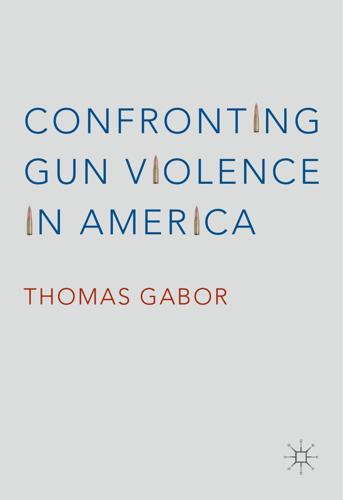
Confronting Gun Violence in America
by
Thomas Gabor
Published 12 Sep 2016
These figures indicate that gun carriers likely do not exceed 5 % of the population and just a fraction of these individuals carry daily or several times a week. The Risks versus Benefits of Gun Ownership and Carrying In 1998, John Lott, then a University of Chicago economist, gave the concealed carry movement some credibility with the publication of his book More Guns, Less Crime.14 Lott conducted statistical analyses from 1985 to 1992 that purported to show that states with Shall Issue concealed carry laws (i.e., carry laws with few restrictions) experienced 166 Confronting Gun Violence in America substantial declines in homicides, rapes, and aggravated assaults.
…
Chicago: National Opinion Research Center: 2001. Tables 13 and 14. 13. CBS DC, Report: Number of concealed carry permits surges as violent crime rate drops [Internet]. CBS. 2014 Jul 10. Available from: http:// washington.cbslocal.com/2014/07/10/report-number-of-concealed-carrypermits-surges-as-violent-crime-rate-drops/ 14. Lott J. More guns, less crime. Chicago: University of Chicago Press; 1998. 15. Ludwig J. Concealed gun-carrying laws and violent crime: evidence from state panel data. Int Rev. Law Econ. 1998; 18(3): 239–254. 16. Aneja A, Donohue J, Zhang A. The impact of right to carry laws and the NRC report: lessons for the empirical evaluation of law and policy.

Merchants of the Right: Gun Sellers and the Crisis of American Democracy
by
Jennifer Carlson
Published 2 May 2023
Meanwhile, armed individualism is often quite explicitly built around avoiding the trauma of gun violence—not just in the sense that guns are embraced by their owners as protectors against the trauma of gun violence but also in the sense that the promotion of gun rights, to the extent that it is formulated as a political and social panacea to gun violence (i.e., the “more guns, less crime” mantra), takes its advocates off the hook of having to look closely at the suffering of those, disproportionately people of color, who experience gun violence. Armed individualism, conspiracism, and partisanship are not merely means to avoid coming face to face with the fact of our own suffering and the suffering of others, but that avoidance is most certainly in that political mix.
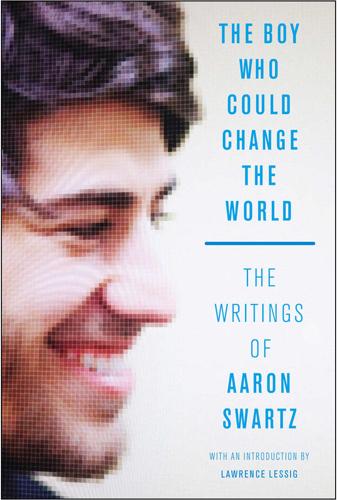
The Boy Who Could Change the World: The Writings of Aaron Swartz
by
Aaron Swartz
and
Lawrence Lessig
Published 5 Jan 2016
Needless to say, paying fresh-faced former college students lots of money to write articles that serve political needs is not the best way to get accurate information. But is accurate information the goal? Look at John Lott, a “resident scholar” at the American Enterprise Institute—the same right-wing think tank that promoted The Bell Curve. Lott’s book More Guns, Less Crime claimed that his scientific studies had found that passing laws to allow people to carry concealed weapons actually lowered crime rates. As usual, the evidence melted away upon investigation, but Lott’s errors were more serious than most. Not content to simply distort the data, Lott fabricated an entire study which he claimed showed that in 97% of cases, simply brandishing a gun would cause an attacker to flee.
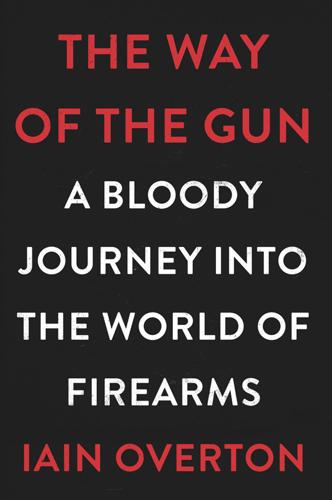
The Way of the Gun: A Bloody Journey Into the World of Firearms
by
Iain Overton
Published 15 Apr 2015
v=BCFB0N_jzMk 41. http://www.gallup.com/poll/159578/nra-favorable-image.aspx 42. http://www.theguardian.com/commentisfree/2013/sep/21/american-gun-out-control-porter 43. http://www.youtube.com/watch?v=_jm2IBUZxZ0&index=7&list=PLyaSPxNidLLvIef8u5rR-6siU2Bs8csn0 44. http://dailycaller.com/2014/03/06/cpac-wayne-lapierres-speech/2/ 45. http://www.nraila.org/news-issues/fact-sheets/2013/more-guns-less-crime-2013.aspx 46. http://www.theguardian.com/commentisfree/2014/apr/28/nra-war-on-america-wayne-lapierre-indianapolis 47. http://www.usatoday.com/story/news/politics/2013/05/04/nra-meeting-lapierre-membership/2135063/; http://www.businessinsider.com/gun-industry-funds-nra-2013-1?IR=T 48. http://www.vpc.org/studies/bloodmoney2.pdf 49. http://www.campaign2unload.org/wp-content/uploads/2014/04/Gun-Industry-Members.pdf 50.
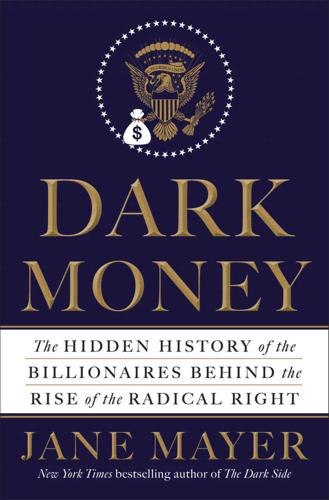
Dark Money: The Hidden History of the Billionaires Behind the Rise of the Radical Right
by
Jane Mayer
Published 19 Jan 2016
Without the rigorous peer-reviewed standards required by prestigious academic publications, the Olin Foundation was able to inject into the mainstream a number of works whose scholarship was debatable at best. For example, Olin Foundation funds enabled John R. Lott Jr., then an Olin fellow at the University of Chicago, to write his influential book More Guns, Less Crime. In the work, Lott argued that more guns actually reduce crime and that the legalization of concealed weapons would make citizens safer. Politicians advocating weaker gun control laws frequently cited Lott’s findings. But according to Adam Winkler, the author of Gunfight, Lott’s scholarship was suspect.
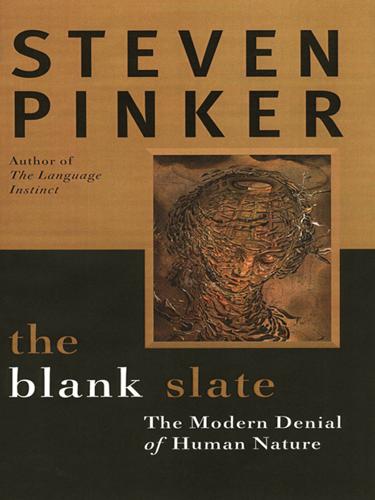
The Blank Slate: The Modern Denial of Human Nature
by
Steven Pinker
Published 1 Jan 2002
The Israelis and Swiss are armed to the teeth but have low rates of violent personal crime, and among American states, Maine and North Dakota have the lowest homicide rates but almost every home has a gun.25 The idea that guns increase lethal crime, though certainly plausible, has been so difficult to prove that in 1998 the legal scholar John Lott published a book of statistical analyses with a title that flaunts the opposite conclusion: More Guns, Less Crime. Even if he is wrong, as I suspect he is, it is not so easy to show that more guns mean more crime. As for discrimination and poverty, again it is hard to show a direct cause-and-effect relationship. Chinese immigrants to California in the nineteenth century and Japanese-Americans in World War II faced severe discrimination, but they did not react with high rates of violence.